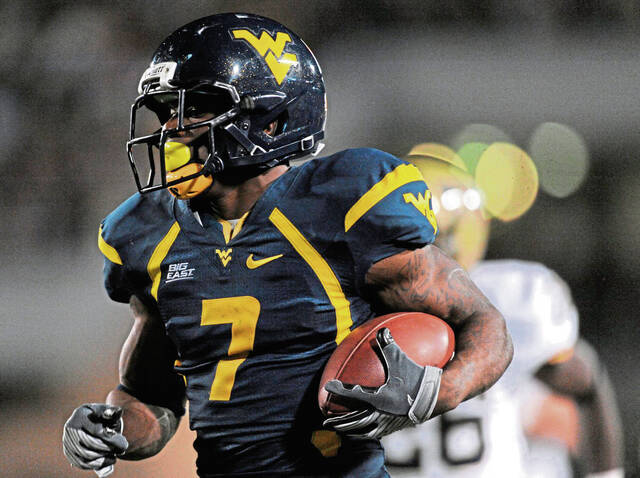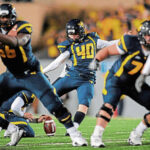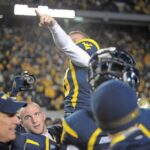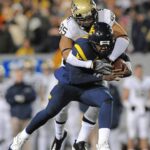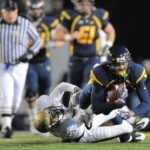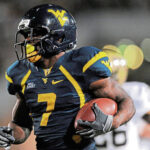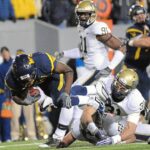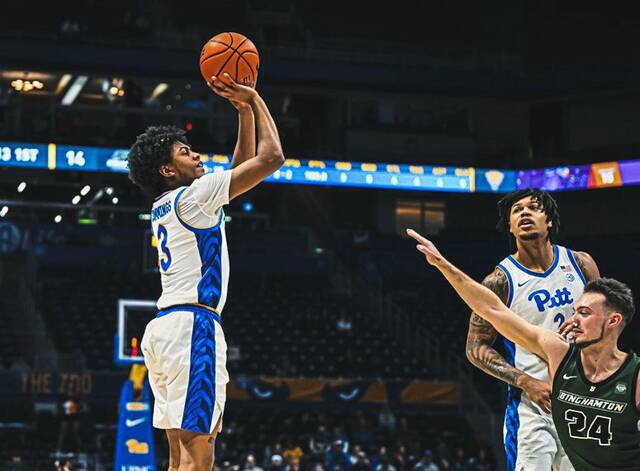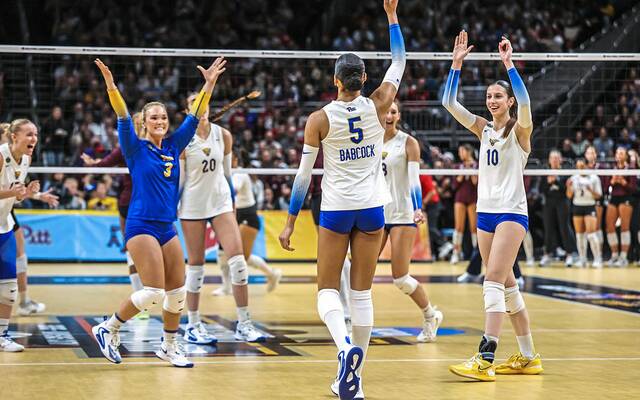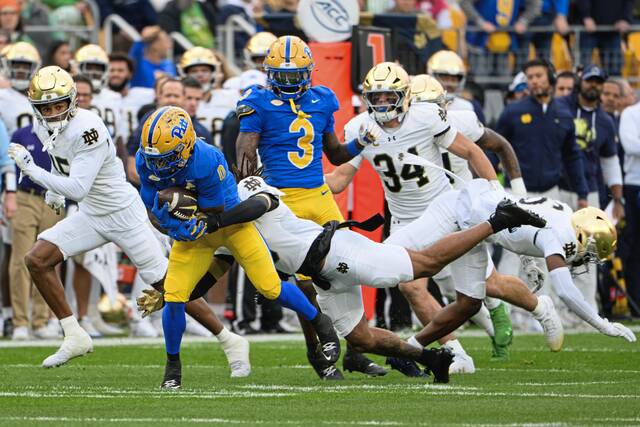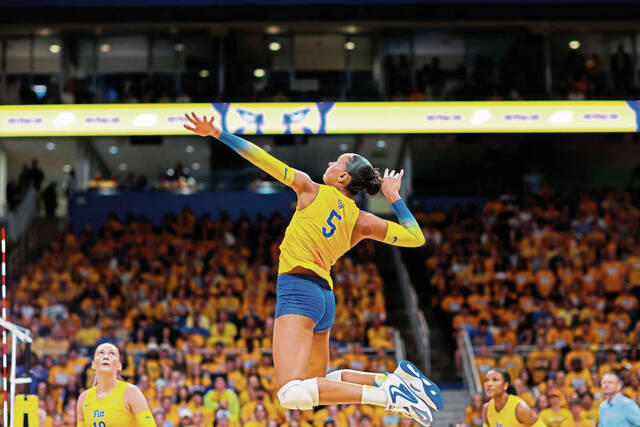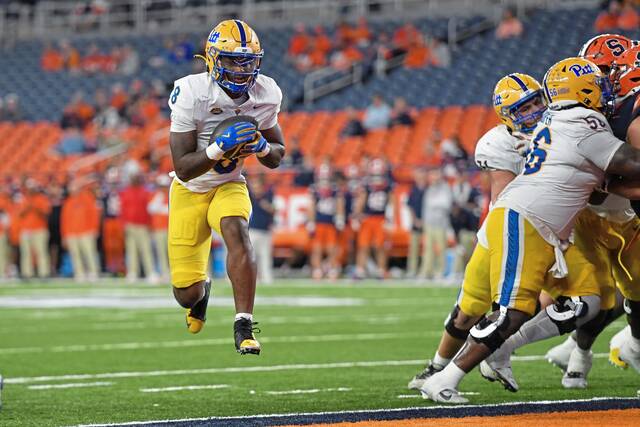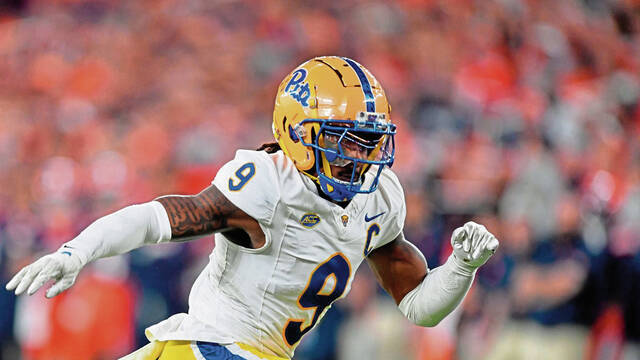With so much talk about the Backyard Brawl resonating up and down Interstate 79, you might wonder:
Where did the name Backyard Brawl originate?
Most people believe it wasn’t bestowed on what would become one of college football’s most passionate rivalries until the 1960s when the late Pittsburgh Press sports writer Russ Franke dubbed it so.
Or did he?
“We still don’t have positive proof,” the legendary Beano Cook, former Pitt sports information director, once told long-time West Virginia sports writer Mickey Furfari. “Russ was gone when we first brought up the matter.”
By any name, the series has provided each school’s fans with a variety of thrills. As a respectful nod to history, the Tribune-Review has assembled a compilation of the five most memorable victories in the Backyard Brawl for both teams.
Many thanks to WVU Director of Athletics Content and historian John Antonik for help in compiling this list of West Virginia’s most memorable wins.
WVU 9, Pitt 6, Oct. 13, 1928, Pitt Stadium
The victory was the only time the Mountaineers defeated Jock Sutherland, the winningest Pitt coach (1924-38). Antonik called it “one of the great wins in school history” and said participants kept returning for reunions 50 years later.
In those days, Pitt was considered one of the nation’s powerhouse programs. Antonik goes a bit further in praising his rival.
“Pitt might have been the best program in the country,” he said. “They were the equivalent of Alabama back then. They were dominant.”
Pitt moved up and down the field but was unable to score more than six points. WVU’s only touchdown was set up by Eddie Bartrug’s interception in the third quarter.
“Other than those two plays, Pitt dominated the game entirely,” Antonik said. “Pitt was so much further ahead than West Virginia was. It was almost kind of like a fluke win.”
Pitt won the next 15 games in a row, giving up a total of 39 points.
WVU 16, Pitt 0, Oct. 25, 1952, Pitt Stadium
While celebrating the Mountaineers’ first shutout of the Panthers since 1898 and their first victory against a ranked team (Pitt was 18th), a cluster of fans decided to go after the goalpost.
“One of the policemen up top got on the radio,” Antonik said, “and said, ‘Let them have it.’
“The cop down on the field thought it meant hit them over the head with a billy club. The policeman knocked the guy out.”
WVU freshmen Fred Wyant, Sam Huff and Bruce Bosley were the stars that day — during the Korean War, freshmen were given varsity status — while Pitt was without All-American linebacker Joe Schmidt, a man who often played through painful injuries.
Wyant was later an NFL referee. Huff is in the College and Pro Football Halls of Fame after he became the first NFL player featured on the cover of Time magazine.
WVU 17, Pitt 14, Nov. 8, 1975, Mountaineer Field
The game was Pitt’s next-to-last loss before its undefeated national championship season of 1976. It marked WVU’s only victory against Pitt from 1973-1982.
“Anybody who went to school at WVU in the 1970s, that’s the game they always talk about,” Antonik said.
Bill McKenzie kicked a 38-yard field goal with four seconds left for the decisive points after Dan Kendra completed a sideline pass to Randy Swinson.
“The place went nuts. Sunny Side (a Morgantown neighborhood where students congregated) just erupted,” Antonik said. “McKenzie never had to buy a beer again in his life in West Virginia.”
WVU 24, Pitt 21, Oct. 1, 1983, Mountaineer Field
The victory was coach Don Nehlen’s first against Pitt after Johnny Majors and Jackie Sherrill had made the Panthers nationally relevant. Nehlen was WVU’s most successful coach in Pitt games, compiling an 11-8-2 record.
“When Nehlen got here,” Antonik said, “the first thing everybody asked him was, ‘When are you going to beat Pitt? When are you going to beat Penn State?’ ”
But Pitt was beating Nehlen head-to-head on recruits, especially on the offensive and defensive lines.
“It took Nehlen four years to physically match up to Pitt,” Antonik said. “(The victory) was a big psychological win for Nehlen’s program. It was a psychological win for the fans. Nehlen beat Pitt the way Pitt had beaten West Virginia all those years by physically controlling the line of scrimmage.
“The 1983 game validated some of the things Nehlen was telling his team: ‘We can’t beat Pitt head–to-head for the best linemen, but we can get guys and develop them over four years and maybe get them to the point where we would be able to match that.”
The rivalry was so important to Nehlen that no one was allowed in the football complex during Pitt week.
“That place was locked down,” Antonik said. “I remember going over there, and he threw me out.”
West Virginia won the game with a 14-play (13 runs), 90-yard touchdown drive. Quarterback Jeff Hostetler scored to win it.
“They didn’t have the bootleg play in the playbook,” Antonik said, “but they knew (Pitt coach Foge) Fazio was going to bring everybody and go after the fullback dive.
“He told Jeff, ‘Just bootleg it.’ No one else knew Hostetler was going to pull the ball and fake the dive to Ron Wolfley. They said the crowd eruption was so loud you could it all the way across the river in Westover (more than a mile away).”
Antonik said the victory was special for Hostetler, who took a tremendous beating in Pitt’s 16-13 victory the previous year.
“Hostetler took such a beating in the ’82 game up there, they had to carry him off field into the locker room,” Antonik said. “Players had to help him get dressed, carry him on the bus. When the bus returned, they had to carry him across the street to his apartment. The next day, the players had to go in and get him and carry him into the training room so he could get treatment.
“They threw 39 passes in that game, and they said Hostetler got hit every time he dropped back. This was before the days where they protected the quarterback.”
WVU 19, Pitt 16, Nov. 27, 2009, Mountaineer Field.
The game was the first Backyard Brawl in Morgantown since Pitt’s iconic upset two years earlier and a week before the Panthers’ program-changing 45-44 loss to Cincinnati.
With Dave Wannstedt’s best team, Pitt was ranked No. 8 in the nation and on its way to a double-digit victory (10) season for the first time in 28 years.
The game turned on a handful of plays, most of them WVU redshirt freshman Tyler Bitancurt’s four field goals, including the winning 43-yarder at the horn. West Virginia running back Noel Devine broke a 6-6 tie late in the third quarter with an 88-yard touchdown run.
Setting up for the final field goal, Wannstedt stationed 6-foot-4 Jon Baldwin at the base of the goalpost in an attempt to block the field goal. But he wasn’t tall enough.
“His fingers are right there to block it. It was that close,” Antonik said.






